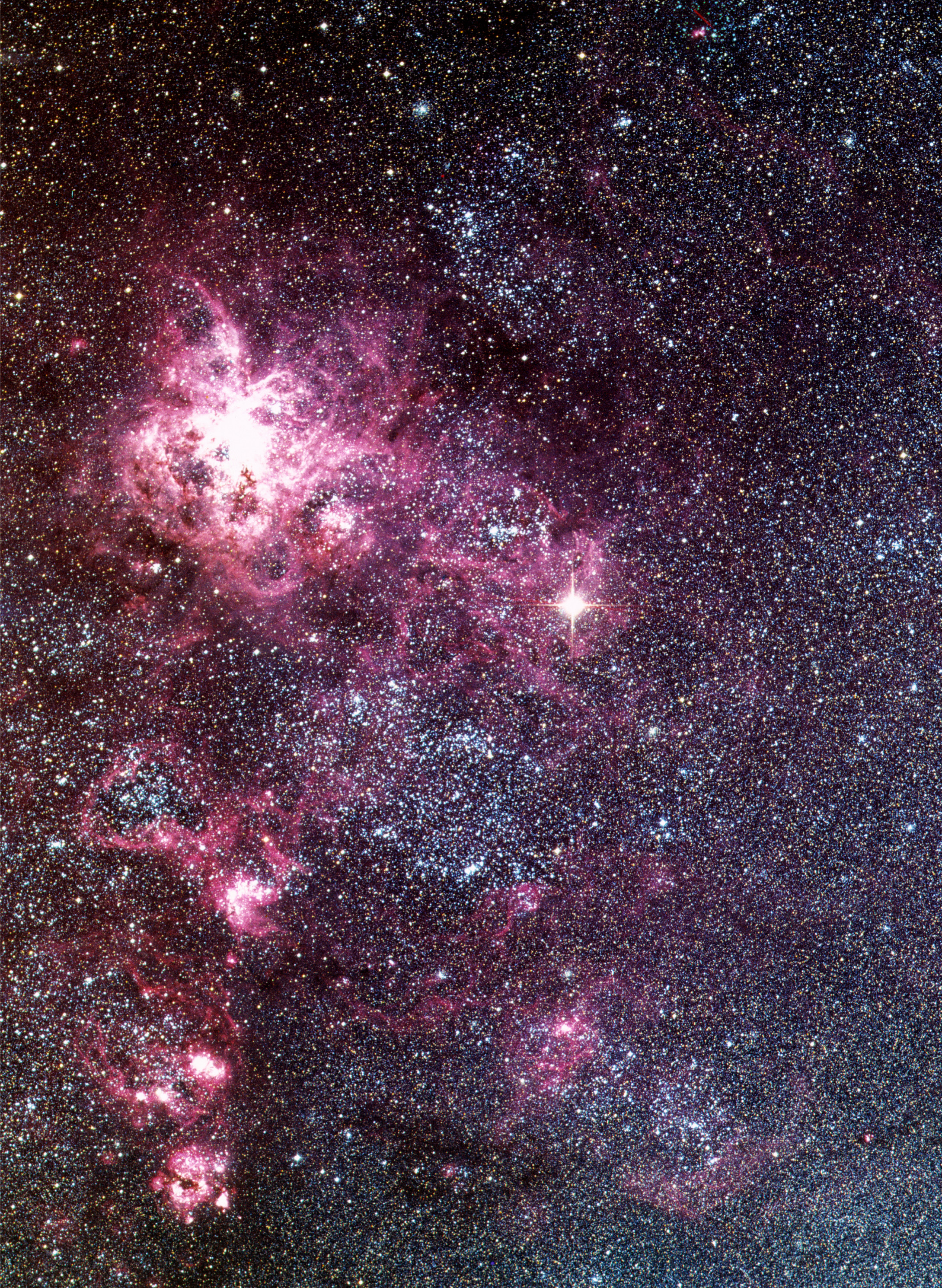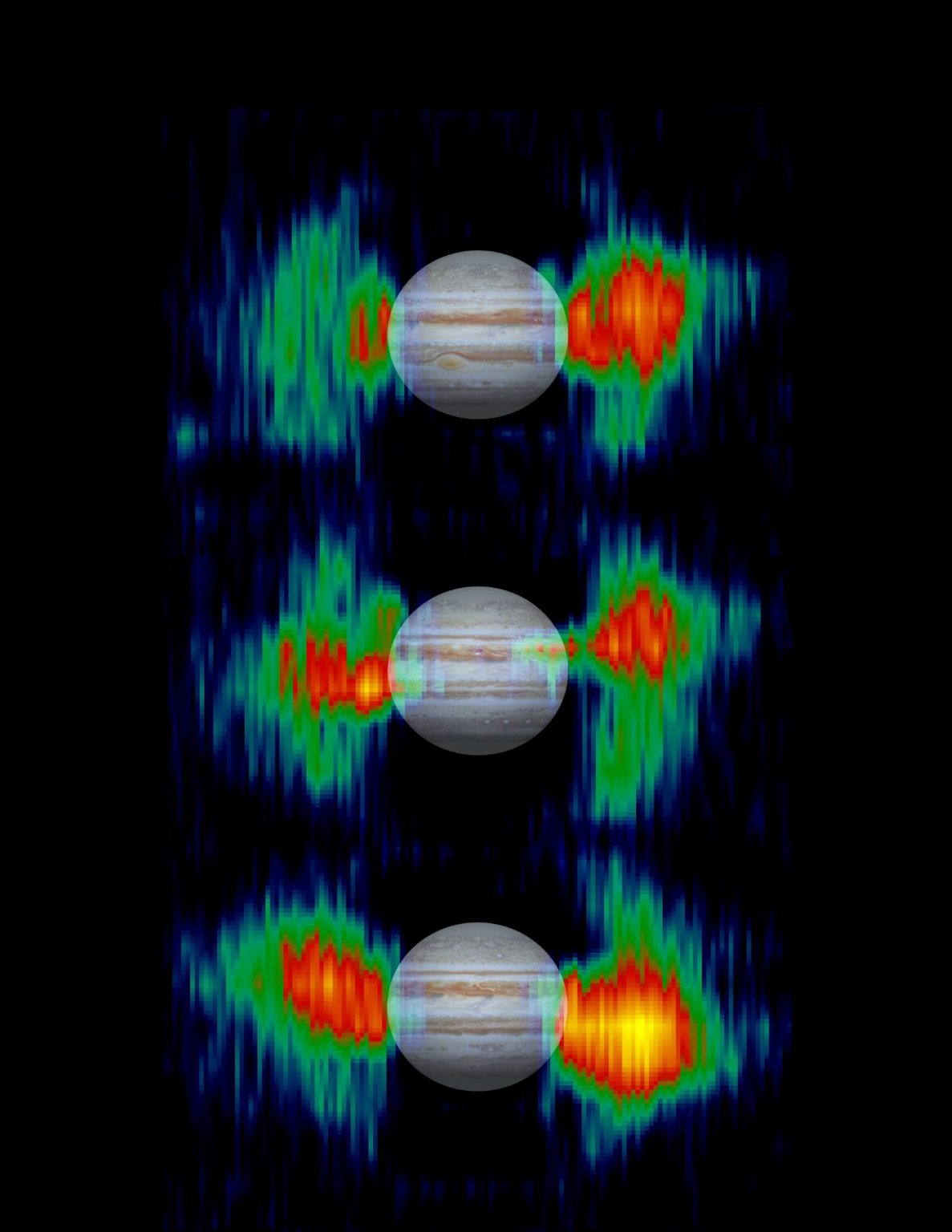|
Astron (spacecraft)
Astron was a Soviet space telescope launched on 23 March 1983 at 12:45:06 UTC, using the Proton-K rocket. Based on the 4MV spacecraft design and operational for six years, Astron was the largest ultraviolet space telescope of its time. The project was headed by Alexandr Boyarchuk. The spacecraft was designed and constructed by the Crimean Astrophysical Observatory and NPO Lavochkin. A group of scientists from these institutions was awarded the USSR State Prize for their work. The payload consisted of an 80 cm ultraviolet telescope, which was jointly designed by the USSR and France, and an X-ray spectroscope. It could take UV spectra 150-350 nm. Placed into an orbit with an apogee of , Astron was capable of making observations outside the Earth's umbra and radiation belt. Among the most important observations made by Astron were those of SN 1987A supernova from March 4 to March 12, 1987, and of Halley's Comet in December 1985, the latter of which enabled a group of S ... [...More Info...] [...Related Items...] OR: [Wikipedia] [Google] [Baidu] |
Astrophysics
Astrophysics is a science that employs the methods and principles of physics and chemistry in the study of astronomical objects and phenomena. As one of the founders of the discipline, James Keeler, said, astrophysics "seeks to ascertain the nature of the heavenly bodies, rather than their positions or motions in space—''what'' they are, rather than ''where'' they are", which is studied in celestial mechanics. Among the subjects studied are the Sun ( solar physics), other stars, galaxies, extrasolar planets, the interstellar medium, and the cosmic microwave background. Emissions from these objects are examined across all parts of the electromagnetic spectrum, and the properties examined include luminosity, density, temperature, and chemical composition. Because astrophysics is a very broad subject, ''astrophysicists'' apply concepts and methods from many disciplines of physics, including classical mechanics, electromagnetism, statistical mechanics, thermodynamics, quantum ... [...More Info...] [...Related Items...] OR: [Wikipedia] [Google] [Baidu] |
USSR State Prize
The USSR State Prize () was one of the Soviet Union’s highest civilian honours, awarded from its establishment in September 1966 until the dissolution of the USSR in 1991. It recognised outstanding contributions in the fields of science, mathematics, literature, the arts, and architecture. History State Stalin Prize (1941–1956) The award traces its origins to the State Stalin Prize (), commonly known as the Stalin Prize, which was established in 1941. It honoured achievements in science, technology, literature, and the arts deemed vital to the Soviet war effort and postwar reconstruction.Volkov, Solomon; Bouis, Antonina W., trans. 2004. ''Shostakovich and Stalin: The Extraordinary Relationship Between the Great Composer and the Brutal Dictator''. New York: Alfred A. Knopf. ISBN 0-375-41082-1. Ceremonies were suspended during 1944–45 and then held twice in 1946 (January for works from 1943–44; June for 1945 works). USSR State Prize (1966–1991) By 1966, the Stalin Prize h ... [...More Info...] [...Related Items...] OR: [Wikipedia] [Google] [Baidu] |
Space Telescopes
A space telescope (also known as space observatory) is a telescope in outer space used to observe astronomical objects. Suggested by Lyman Spitzer in 1946, the first operational telescopes were the American Orbiting Astronomical Observatory, OAO-2 launched in 1968, and the Soviet Orion 1 ultraviolet telescope aboard space station Salyut 1 in 1971. Space telescopes avoid several problems caused by the atmosphere, including the absorption or scattering of certain wavelengths of light, obstruction by clouds, and distortions due to atmospheric refraction such as twinkling. Space telescopes can also observe dim objects during the daytime, and they avoid light pollution which ground-based observatories encounter. They are divided into two types: Satellites which map the entire sky (astronomical survey), and satellites which focus on selected astronomical objects or parts of the sky and beyond. Space telescopes are distinct from Earth imaging satellites, which point toward Earth f ... [...More Info...] [...Related Items...] OR: [Wikipedia] [Google] [Baidu] |
GSFC
The Goddard Space Flight Center (GSFC) is a major NASA space research laboratory located approximately northeast of Washington, D.C., in Greenbelt, Maryland, United States. Established on May 1, 1959, as NASA's first space flight center, GSFC employs about 10,000 civil servants and contractors. Named for American rocket propulsion pioneer Robert H. Goddard, it is one of ten major NASA field centers. GSFC is partially within the former Goddard census-designated place; it has a Greenbelt mailing address.CENSUS 2000 BLOCK MAP: GODDARD CDP (PDF). . Retrieved September 1, 2018. 1990 Census map of Prince George's Coun ... [...More Info...] [...Related Items...] OR: [Wikipedia] [Google] [Baidu] |
NASA
The National Aeronautics and Space Administration (NASA ) is an independent agencies of the United States government, independent agency of the federal government of the United States, US federal government responsible for the United States's civil list of government space agencies, space program, aeronautics research and outer space, space research. National Aeronautics and Space Act, Established in 1958, it succeeded the National Advisory Committee for Aeronautics (NACA) to give the American space development effort a distinct civilian orientation, emphasizing peaceful applications in space science. It has since led most of America's space exploration programs, including Project Mercury, Project Gemini, the 1968–1972 Apollo program missions, the Skylab space station, and the Space Shuttle. Currently, NASA supports the International Space Station (ISS) along with the Commercial Crew Program and oversees the development of the Orion (spacecraft), Orion spacecraft and the Sp ... [...More Info...] [...Related Items...] OR: [Wikipedia] [Google] [Baidu] |
Nauka (publisher)
Nauka () is a Russian publisher of academic books and journals. Established in the USSR in 1923, it was called the USSR Academy of Sciences Publishing House until 1963. Until 1934 the publisher was based in Saint Petersburg, Leningrad, then moved to Moscow. Its logo depicts an open book with Sputnik 1 above it. Nauka was the largest scientific publishing house in the USSR, as well as in the world at one time (in 1982). It was also notable for being the publisher of the USSR Academy of Sciences and its branches. In 1972 Nauka published 135 scientific journals, including 31 physical and mathematical, 24 chemical, 29 biological and five popular science journals: ''Priroda'' (Nature), ''Zemlya i Vselennaya'' (Earth and the Universe), ''Khimia i zhizn'' (Chemistry and Life), ''Kvant (magazine), Kvant'' (Quantum), and ''Russkaya rech'' (Russian speech). The greater part of Nauka's production were monographs. It also published thematic collected works, reference books, textbooks and fo ... [...More Info...] [...Related Items...] OR: [Wikipedia] [Google] [Baidu] |
Pis'ma V Astronomicheskii Zhurnal
''Astronomy Letters'' (Russian: ''Pis’ma v Astronomicheskii Zhurnal'') is a Russian peer-reviewed scientific journal. The journal covers research on all aspects of astronomy and astrophysics, including high energy astrophysics, cosmology, space astronomy, theoretical astrophysics, radio astronomy, extra galactic astronomy, stellar astronomy, and investigation of the Solar System. ''Pis’ma v Astronomicheskii Zhurnal'' is translated in its English version by MAIK Nauka/Interperiodica, which is also the official publisher. However, beginning in 2006 access and distribution outside of Russia is made through Springer Science+Business Media. Both English and Russian versions are published simultaneously. ''Astronomy Letters'' was established in 1994 and published bimonthly. From 1999, it has been published monthly. The editor-in-chief is Rashid A. Sunyaev (Space Research Institute). Abstracting and indexing ''Astronomy Letters'' is abstracted and indexed in: According to the ' ... [...More Info...] [...Related Items...] OR: [Wikipedia] [Google] [Baidu] |
Coma (cometary)
The coma is the nebulous envelope around the nucleus of a comet, formed when the comet passes near the Sun in its highly elliptical orbit. As the comet warms, parts of it sublimate; this gives a comet a diffuse appearance when viewed through telescopes and distinguishes it from stars. The word ''coma'' comes from the Greek (), which means "hair" and is the origin of the word ''comet'' itself. The coma is generally made of ice and comet dust. Water composes up to 90% of the volatiles that outflow from the nucleus when the comet is within from the Sun. The H2O parent molecule is destroyed primarily through photodissociation and to a much smaller extent photoionization. The solar wind plays a minor role in the destruction of water compared to photochemistry. Larger dust particles are left along the comet's orbital path while smaller particles are pushed away from the Sun into the comet's tail by light pressure. On 11 August 2014, astronomers released studies, using the A ... [...More Info...] [...Related Items...] OR: [Wikipedia] [Google] [Baidu] |
Halley's Comet
Halley's Comet is the only known List of periodic comets, short-period comet that is consistently visible to the naked eye from Earth, appearing every 72–80 years, though with the majority of recorded apparitions (25 of 30) occurring after 75–77 years. It last appeared in the inner parts of the Solar System in 1986 and will next appear in mid-2061. Officially designated 1P/Halley, it is also commonly called Comet Halley, or sometimes simply Halley. Halley's periodic returns to the inner Solar System have been observed and recorded by astronomers around the world since at least 240 BC, but it was not until 1705 that the English astronomer Edmond Halley understood that these appearances were re-appearances of the same comet. As a result of this discovery, the comet is named after Halley. During its 1986 visit to the inner Solar System, Halley's Comet became the first comet to be observed in detail by a spacecraft, ''Giotto (spacecraft), Giotto'', providing the first obser ... [...More Info...] [...Related Items...] OR: [Wikipedia] [Google] [Baidu] |
SN 1987A
SN 1987A was a Type II supernova in the Large Magellanic Cloud, a dwarf satellite galaxy of the Milky Way. It occurred approximately from Earth and was the closest observed supernova since Kepler's Supernova in 1604. Light and neutrinos from the explosion reached Earth on February 23, 1987, and it was designated "SN 1987A" as the first supernova discovered that year. Its brightness peaked in May of that year, with an apparent magnitude of about 3, brighter than the constellation's brightest star, Alpha Doradus. It was the first supernova that modern astronomers were able to study in great detail, and its observations have provided much insight into core-collapse supernovae. SN 1987A provided the first opportunity to confirm by direct observation the radioactive source of the energy for visible light emissions, by detecting predicted gamma-ray line radiation from two of its abundant radioactive nuclei. This proved the radioactive nature of the long-duration po ... [...More Info...] [...Related Items...] OR: [Wikipedia] [Google] [Baidu] |
Radiation Belt
The Van Allen radiation belt is a zone of energetic charged particles, most of which originate from the solar wind, that are captured by and held around a planet by that planet's magnetosphere. Earth has two such belts, and sometimes others may be temporarily created. The belts are named after James Van Allen, who published an article describing the belts in 1958. Earth's two main belts extend from an altitude of about above the surface, in which region radiation levels vary. The belts are in the inner region of Earth's magnetic field. They trap energetic electrons and protons. Other nuclei, such as alpha particles, are less prevalent. Most of the particles that form the belts are thought to come from the solar wind while others arrive as cosmic rays. By trapping the solar wind, the magnetic field deflects those energetic particles and protects the atmosphere from destruction. The belts endanger satellites, which must have their sensitive components protected with adequate ... [...More Info...] [...Related Items...] OR: [Wikipedia] [Google] [Baidu] |



